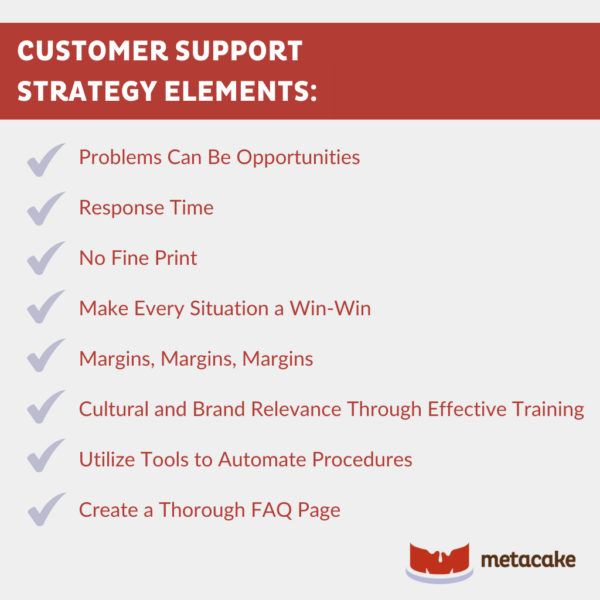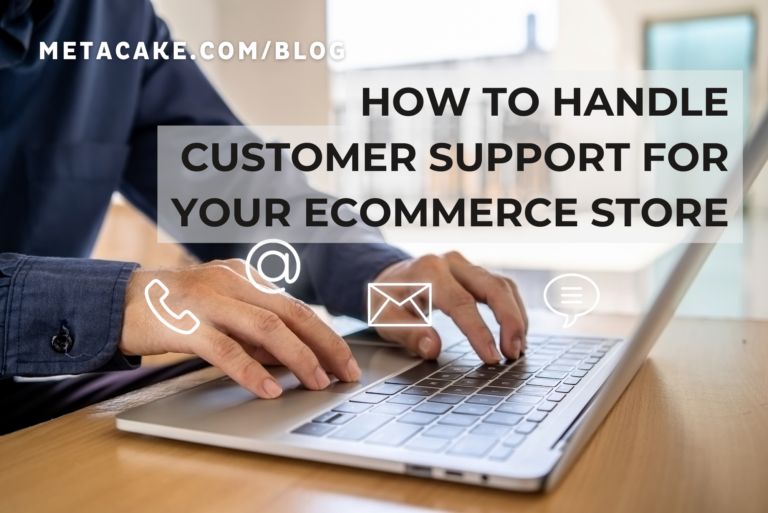In our experience, the average ecommerce or direct-to-consumer company sees customer service as a necessary evil or a nice thing to have for their business. The majority of companies don’t see it as a growth lever.
The best brands use customer support as a way to unlock massive growth for their brand by turning existing customers into raving fans. If you’re looking to create a monster brand, then creating fans is the only way to make that happen.
Is your goal to make the sale and be done, or is it to convert that customer into a raving fan? Every successful, influential brand has a devoted following. However, building these fans requires intentionality and a dedication to exceeding your customers’ expectations at all touchpoints.

Your customer service team and philosophy are at the forefront of generating raving fans. In this article, we’ll discuss how to handle customer support for your ecommerce store and introduce eight key elements of a killer customer support strategy setup to produce raving fans rather than just customers.

8 Essential Elements for Your Customer Support Strategy
1. Problems Can Be Opportunities
Keep in mind that when interacting with customers, every problem is its own opportunity — an opportunity to surprise someone in a marketplace where customer service is typically subpar. Customers expect that they won’t be taken care of and that they’ll have to fight for their resolution.
Want to use that to your advantage? Exceed their highest expectations.
If you can treat your customers differently and address their issues in an unexpected way, you will create fans. These fans will grow passionate about your brand, because who doesn’t love feeling heard and taken care of? They’ll be compelled to share their experience with everyone they meet, which’ll propel your business to greatness and create a viral brand!
2. Response Time
We live in an age of immediate satisfaction, especially when we have a problem on our hands. So, it should go without saying that your customer service team should be as quick as possible to answer questions.
If a delayed response is a possibility, be sure to manage their expectations with transparency! Here’s an example: One of our clients launched their Black Friday sale early, but they were upfront with their customers about their office hours.
Their launch email read, “We’re with our families for Thanksgiving, including our customer service team, so if you have any issues, don’t worry. We’ll be able to help you first thing tomorrow!” Managing expectations in this way does wonders for minimizing frustration on the customer side.
3. No Fine Print
It’s inevitable for your promos or products to have some exclusions or conditions, but it’s best to be as transparent as possible. Your offer should be genuine and not a disguise for you to weasel into their lives.
For the customer, a paragraph of microscopic exceptions will immediately take your offer from exciting to irritating in a matter of seconds. Manage their expectations by being upfront, with as little fine print as possible.
Here’s an example from a retail store that could easily be seen online as well. A promotion instantly becomes less exciting once a customer notices the fine print at the top that requires them to open a credit card to get the discount. Not cool.

4. Make Every Situation a Win-Win
We know the customer isn’t always right. But you can make them feel “right,” no matter what they’re requesting. Again, the more valued a customer feels walking away, the bigger a fan you’ve created.
However, there’s an additional component you need in order to come out on top with this, which leads to our next element: margins.
5. Margins, Margins, Margins
We’ve discussed this in other articles. In fact, it’s the most important element of a successful ecommerce brand, and it’s critical that your margins are large enough to allow space for additional costs, including amazing customer service.
Wondering how you can exceed your customer’s expectations and make a profit? The answer is great margins.
We recommend your margins be at least five times the cost of goods, but the wider, the better, depending on your product. These margins aren’t to support your Bentley fund; they’re to provide a means of investing in your customers.
This may seem like a huge profit, but it ends up being divided among many aspects of your business. And a lot of it goes to helping keep your customers completely satisfied.
6. Cultural and Brand Relevance Through Effective Training
Outsourcing your customer service team is okay as long as you make sure the staff is well-versed in your business’ products, language, and culture. Your customers will not be at ease if they’re speaking to someone who knows nothing about your product and doesn’t seem to be a part of your team.
If you want to take your customer support to the next level, make sure your customer service strategy exhibits brand relevance as well. Many business owners wonder what style of customer service to offer, and quite simply, the best way to go is to use your brand voice.
Whether your customer support members are located in-house or you outsource them, take the time to train your team. In order for processes to be smooth, your team should have the proper responses down, know the guidelines for how to please customers, and be up to speed on what your brand is or isn’t willing to do.
7. Utilize Tools to Automate Procedures
There are several tools out there to help automate customer service procedures. From routing emailing requests to processing returns to live chats, we’ve put together a handy list of apps to look into.
Shopify Flow: This is a workflow app that can be used to automate customer service tasks such as routing email requests, shutting off out-of-stock items, and tracking customer order activity.
Return Logic or Loop: These highly efficient apps allow the customer to complete the return or exchange process online instead of through a customer service rep.
Zendesk, Intercom, or our favorite for Shopify stores, Gorgias: Looking to gather all of your customer service inquiries in one place? Zendesk, Intercom, or Gorgias are awesome apps to collect questions and make sure nothing gets lost.
Manychat: This is a Facebook Messenger bot that allows for instant, interactive communication with your customers on their Messenger app. It’s a great marketing tool, but it also includes a live chat feature for customer service inquiries.
8. Create a Thorough FAQ Page
Building a fantastic FAQ page is a lost art. If you want to answer some of the most common questions your customer support team receives, this is a great place to start.
Go through all possible objections or issues you could possibly think of for your brand or product and comment on them. Remember, this’ll also take your SEO game to the next level; if people are asking these questions about your site, they’re usually Googling it as well.
How to Build Team Structure and Efficiency
So you may have all these elements in place, but how do you start building an efficient team?
First, team structure is critical. Begin with your customer service lead, who’ll be in charge of maintaining the team’s vision and passion. This lead will help manage your core team, which is made up of your in-house customer support representatives. If you need to expand beyond in-house, you can move toward an outsourced team as well.
As you hire your customer service reps, keep in mind that you’re looking for a particular personality. Make sure these individuals love to serve others and solve problems, because they’ll be doing it all day long.
That being said, be prepared to pour back into these employees! This is a tough job, and showing your appreciation can go a long way.
How to Handle Customer Support: Final Thoughts
We hope that the knowledge we’ve provided helps you understand not only how to handle customer support for your ecommerce store but also lays the groundwork for developing raving brand fans.
While this may seem like a lot to take in, we believe that breaking these elements down into bite-sized pieces will help you digest them more effectively. If it still seems too much, feel free to reach out to our team; we’re always happy to help!
